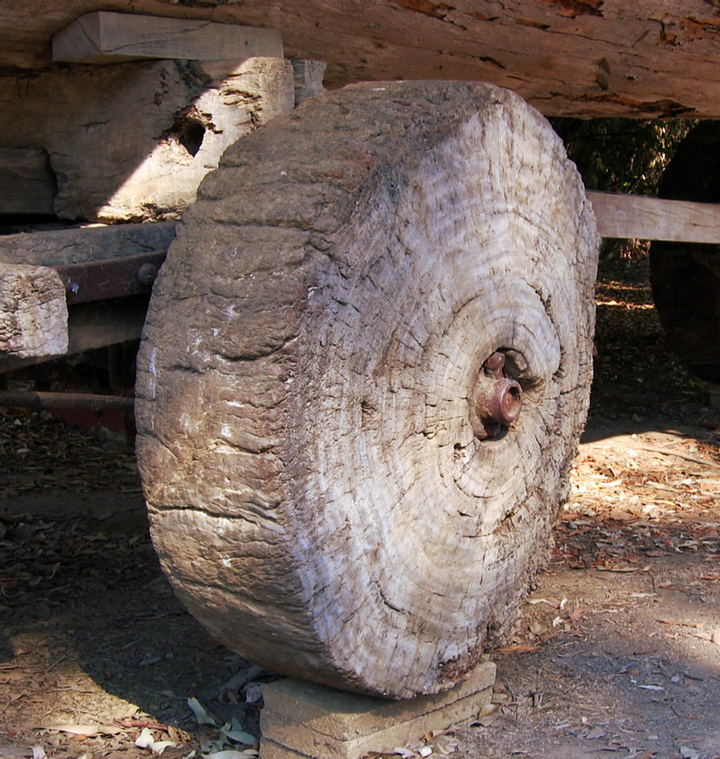Summer 2008
Making History
– Martin Walker
Martin Walker considers the forces that shape history.
In the 19th century, as history was transformed from a vocation to an academic profession, historians began to specialize. Constitutional and diplomatic historians; economic, social, and military specialists; and historians of ideas emerged, then philosophical schools. Some historians preferred the top-down view from the throne, others the bottom-up perspective from the gutter or the plow. But something was lost in the separation of history into these various specialties. Two recent books demonstrate just how fruitful it can be when scholars combine the findings and approaches of different academic disciplines.
In bringing economics into assessments of military history, Jurgen Brauer and Hubert van Tuyll also bring illumination. Cost efficiency isn't top of mind when we gaze on the ruins of some imposing medieval castle. But the analysis is clear. Kings and barons built castles because, however expensive, these fortifications were a great deal cheaper than the alternative of maintaining a large standing army. Moreover, castles provided a refuge for a suddenly vulnerable or beleaguered owner; standing armies, by contrast, often presented a threat to their commander. (The authors do not apply their calculus to non-Western armies, but the example of China’s Great Wall or medieval Arab fortifications suggest that similar factors may well have been at work.)
In our own day, the same analysis suggests that France developed nuclear weapons not simply to augment its prestige, but because doing so was cheaper than raising, training, and maintaining large conventional forces. Nuclear arsenals require a relatively high initial investment in science and technology (which can bring useful spinoffs to the wider economy), but thereafter tend to be cheaper to keep up than armored divisions and fleets of warships. In the 1960s, thanks in part to its nuclear weapons, France felt comfortable cutting 470,000 men from its armed forces.
Brauer and van Tuyll, who teach economics and history, respectively, at Augusta State University in Georgia, also turn their interdisciplinary lens on the mercenary arrangements of Renaissance Italy; the wars of Marlborough, Frederick the Great, and Napoleon; Grant’s campaigns in the Civil War; and the strategic bombings of World War II. The results are invariably stimulating. For example, in their analysis, the medieval drama of kings versus barons can be explained by the fact that, at the end of the 12th century in England, a basic stone keep could be built for £350 and a state-of-the-art version with curtain walls and gate houses for £1,000. While the king’s income never fell below £10,000 a year, only seven barons drew more than £400, and the average was about £200. That is why it took an alliance of barons to force King John to sign the Magna Carta in 1215. Within another 200 years, the relative power of the monarchy increased again, as the castles of even the richest and strongest barons could not withstand the cannon of the royal artillery train. Fortresses, in short, were central not only to the imposition of Norman power over England and Wales but also to the emergence of the centralized monarchy and nation-state.
David Anthony’s book is a masterpiece. A professor of anthropology, Anthony brings together archaeology, linguistics, and rare knowledge of Russian scholarship and the history of climate change to recast our understanding of the formation of early human society. The Horse, the Wheel, and Language begins with perhaps the greatest unanswered question of prehistory: How, when, and why did the Indo-European family of languages emerge and spread to dominate Eurasia from the Atlantic to the Indian Ocean?
A couple of insights from Anthony’s remarkable book may give some of its flavor. DNA studies show that all the world’s domestic horses developed from at least 77 ancestral mares, but quite possibly from a single stallion. A relatively docile stallion would have little hope of reproducing in the wild, as he would have to compete with violent and dominant males, but he would appeal to people looking for a manageable breeder for a domestic bloodline. In Anthony’s perceptive summation, domestication meant that “from the horse’s perspective, humans were the only way he could get a girl. From the human perspective, he was the only male sire they wanted.”
The strong likelihood of one sire for the world’s entire population of horses suggests a single point of origin for the horse-dependent nomads of the steppes. A person on foot with a dog can herd about 200 sheep, Anthony observes, but on a horse can manage about 500. That is half of the key to the growth and spread of the steppe peoples. The other half is that once they had wheels, they could carry their own supplies and thus stay on the move indefinitely, fighting where they chose or running away if necessary. They could roam from the steppes above the Black Sea east into Siberia and west into Europe, and when warm and cold periods made the climate untenable for the early agrarian and urban settlements of the Mesopotamian region, the people of the steppes moved in. Language followed the carts.
* * *
Martin Walker is a senior scholar of the Wilson Center and senior director of A. T. Kearney's Global Business Policy Council.
Reviewed: "Castles, Battles, and Bombs: How Economics Explains Military History" by Jurgen Brauer and Hubert van Tuyll, University of Chicago Press, 2008, and "The Horse, The Wheel, and Language: How Bronze-Age Riders from the Eurasian Steppes Shaped the Modern World" by David W. Anthony, Princeton University Press, 2008.
Photo courtesy of Wikimedia Commons
